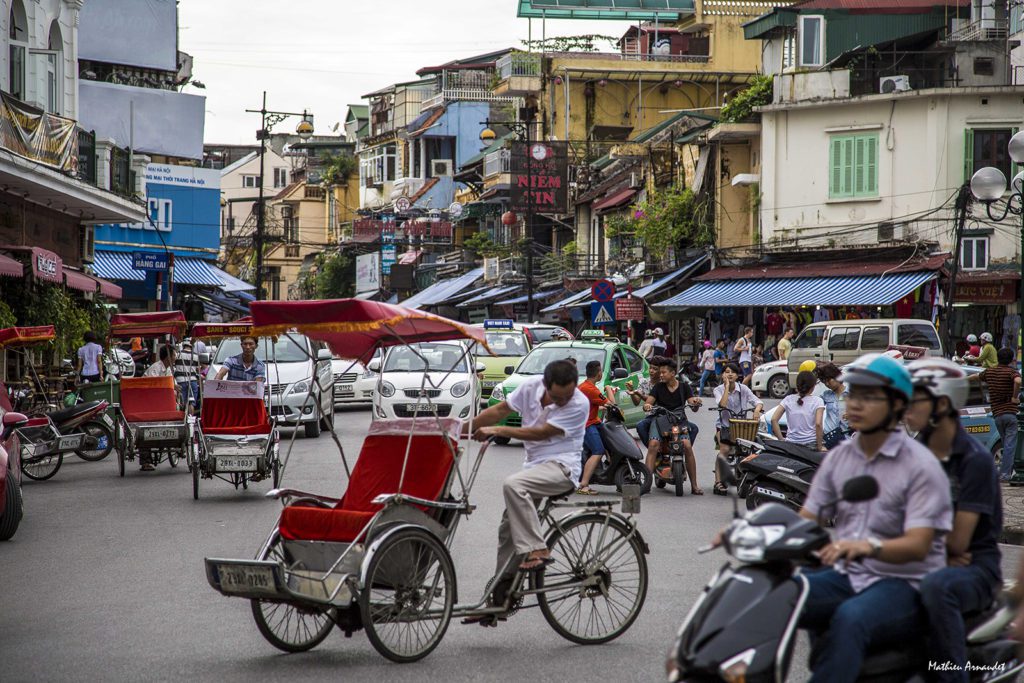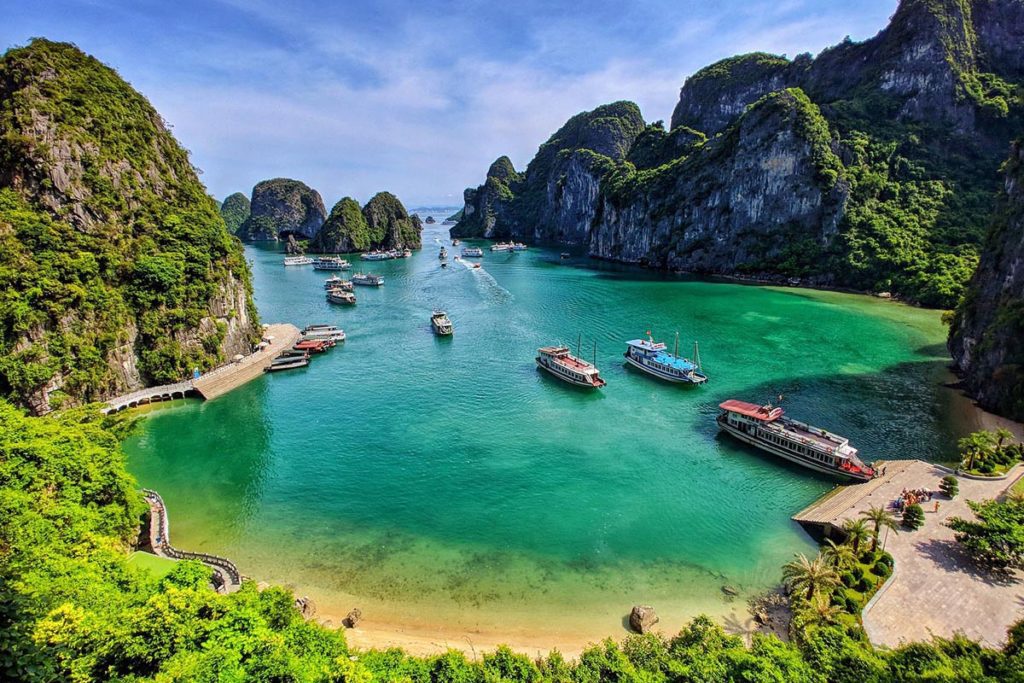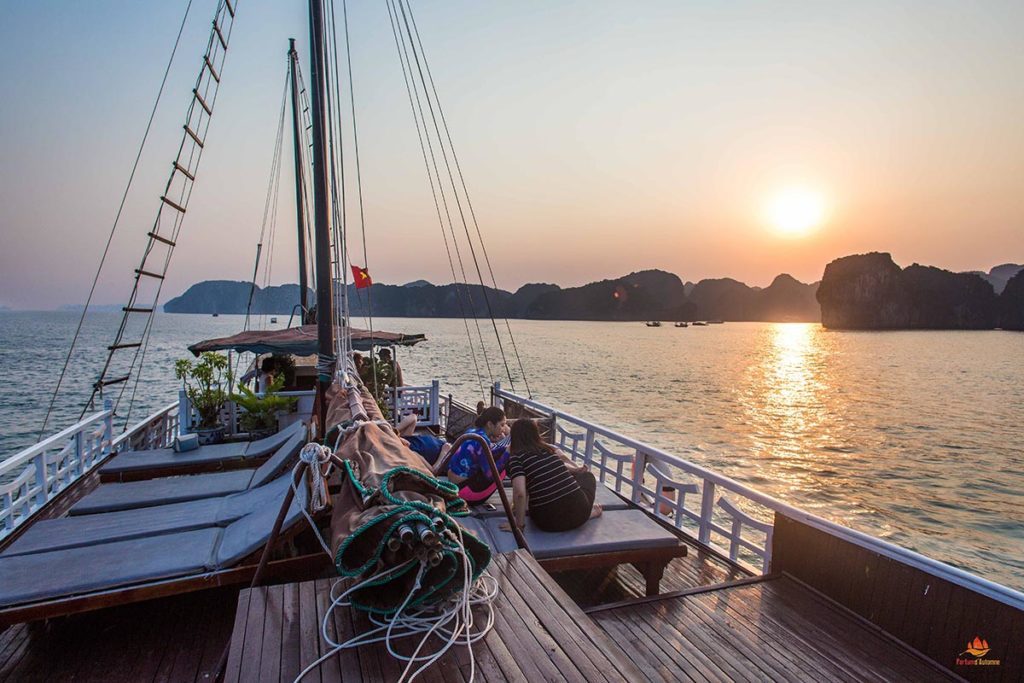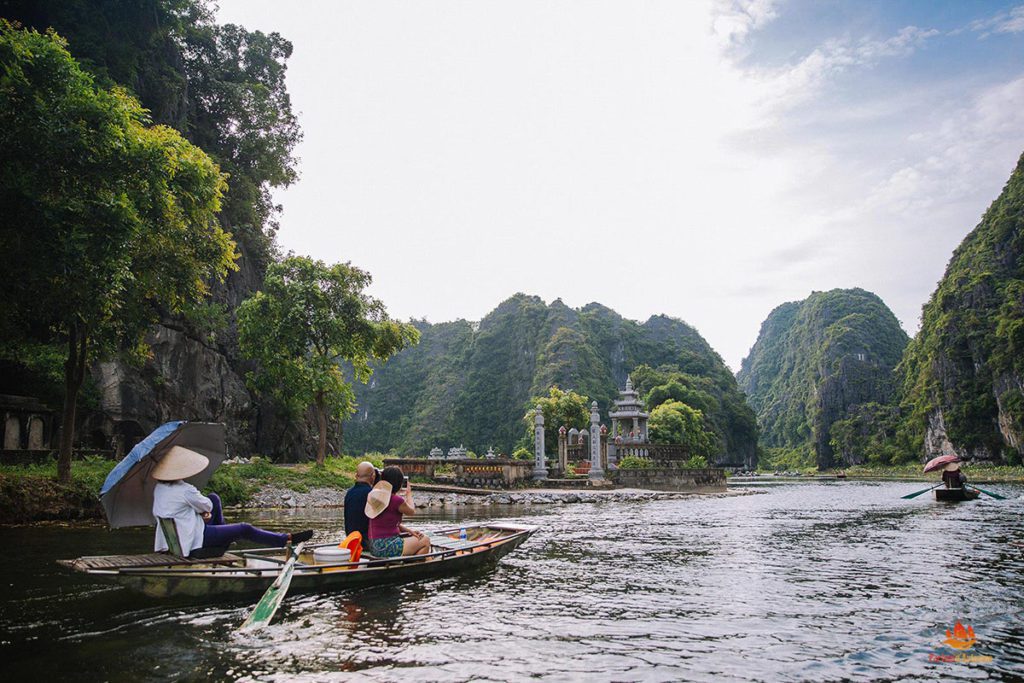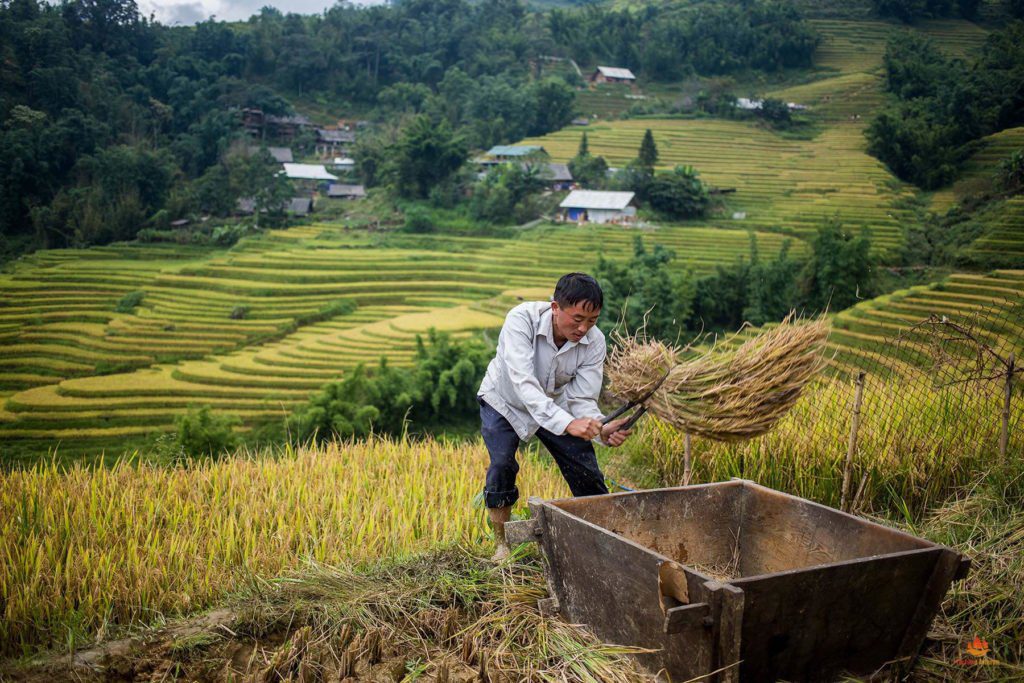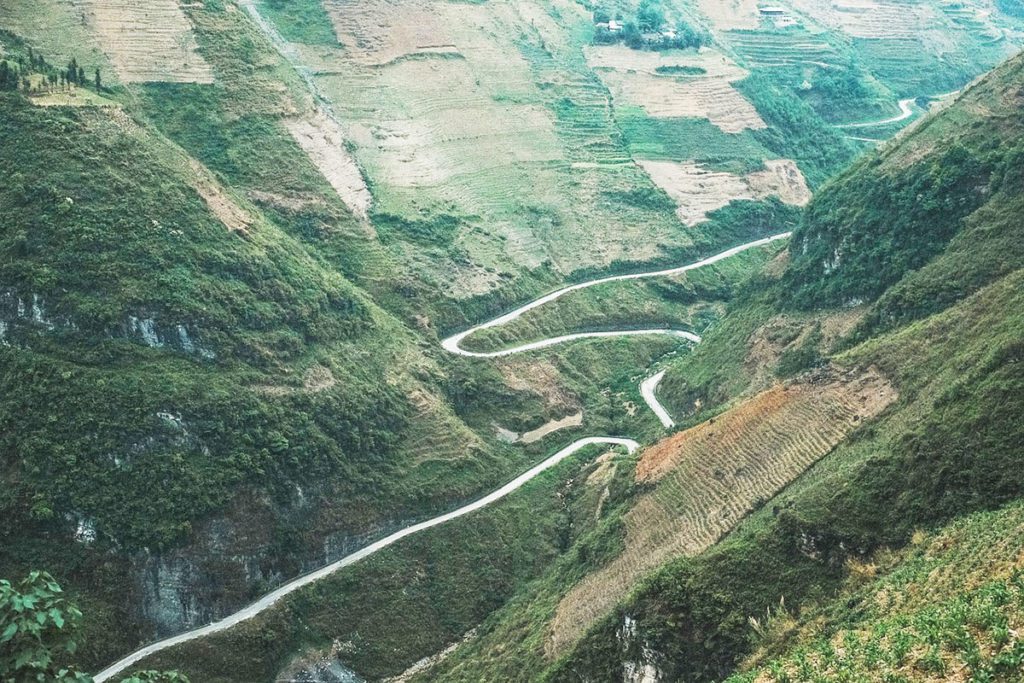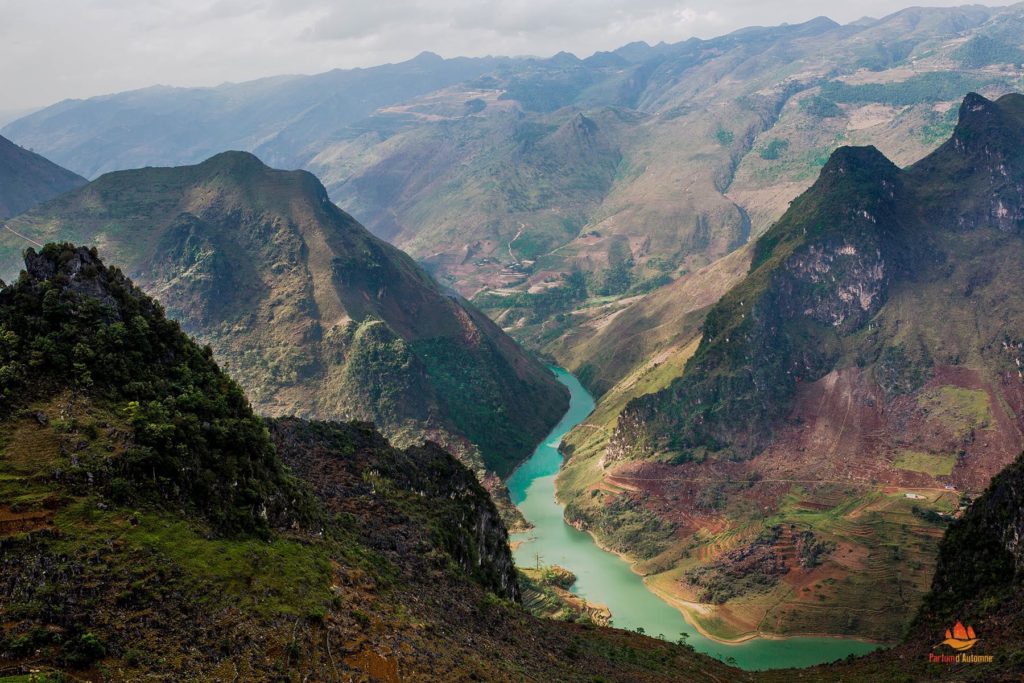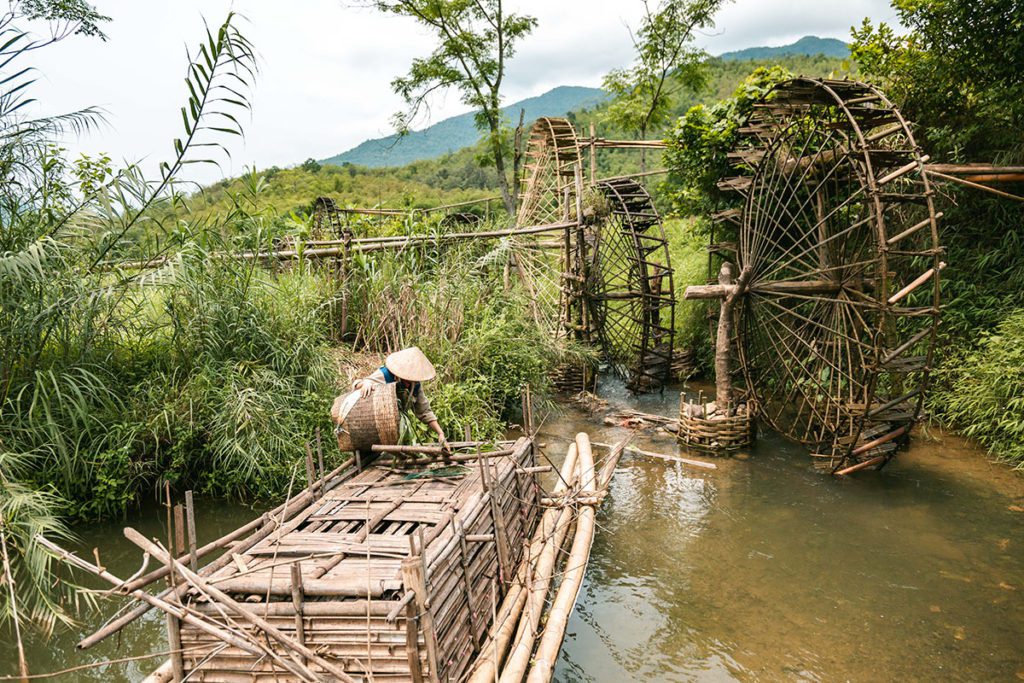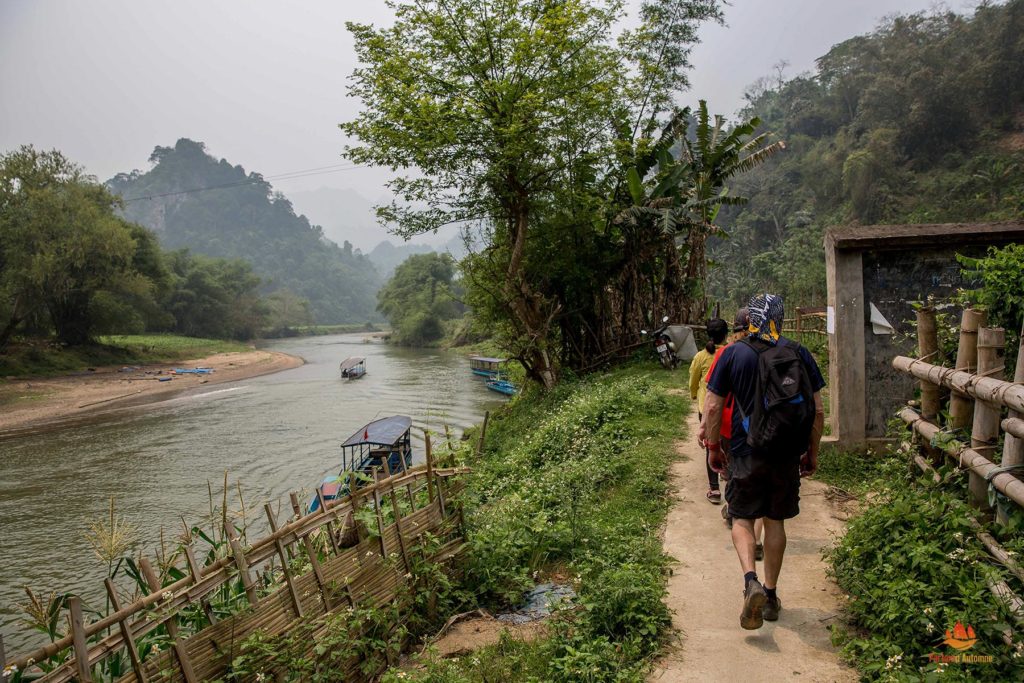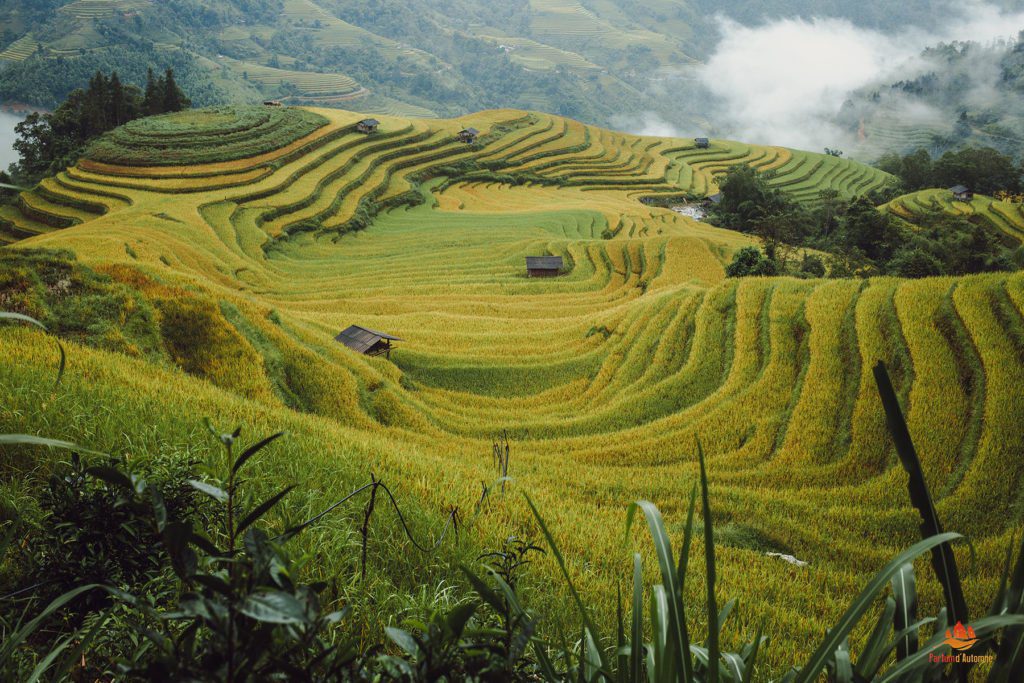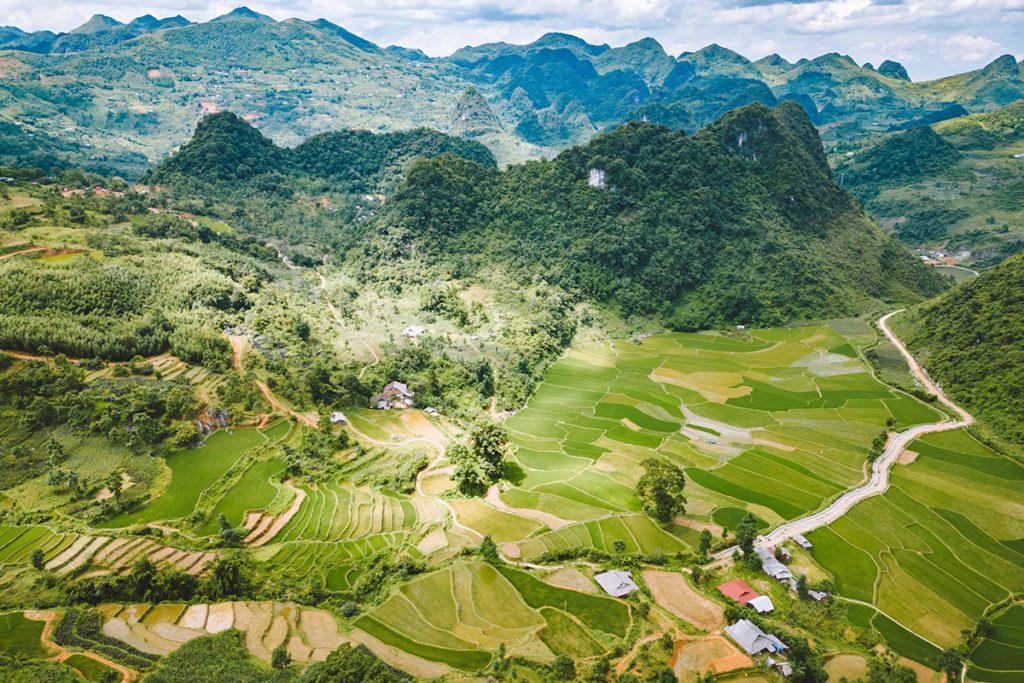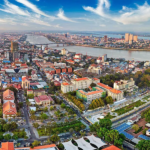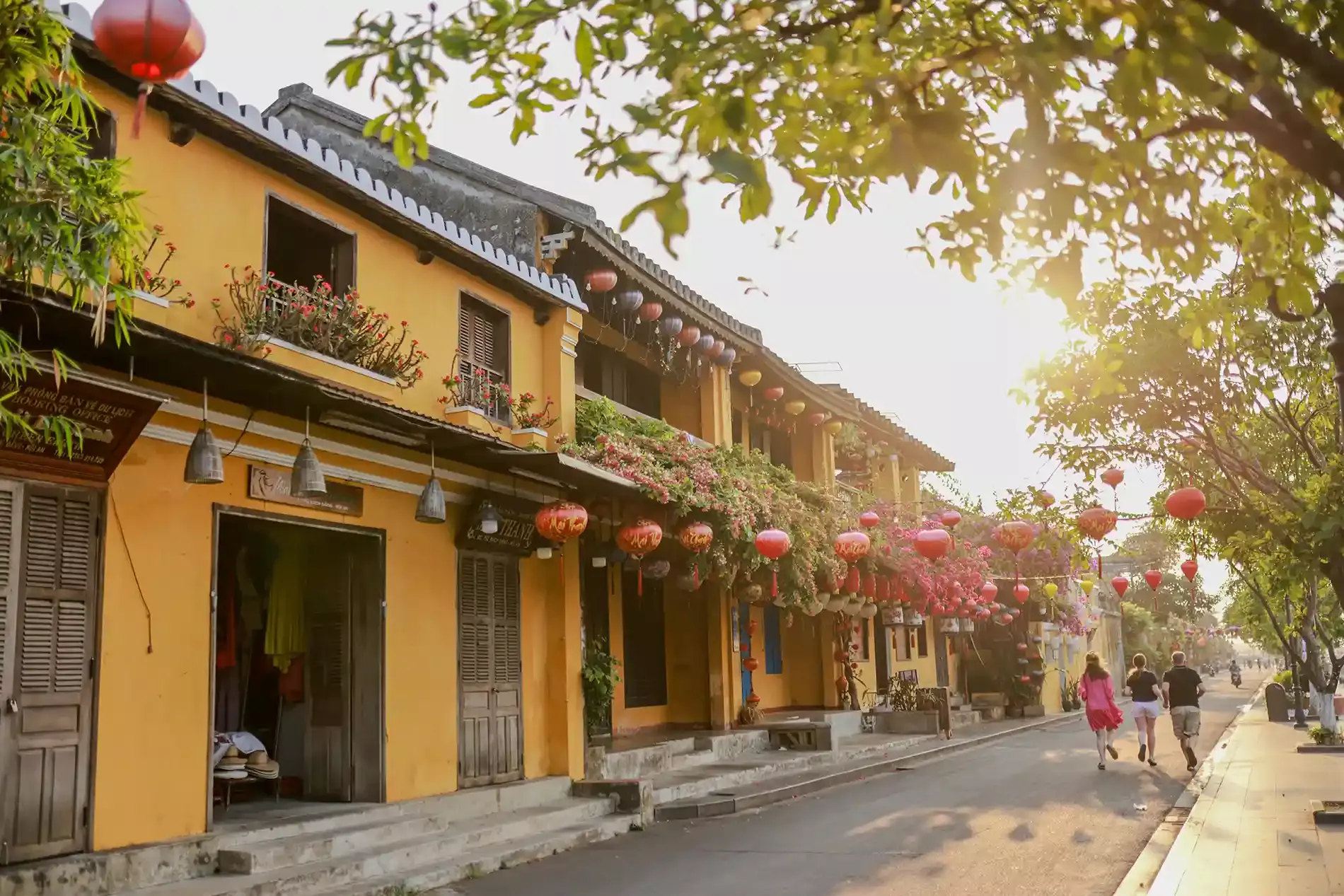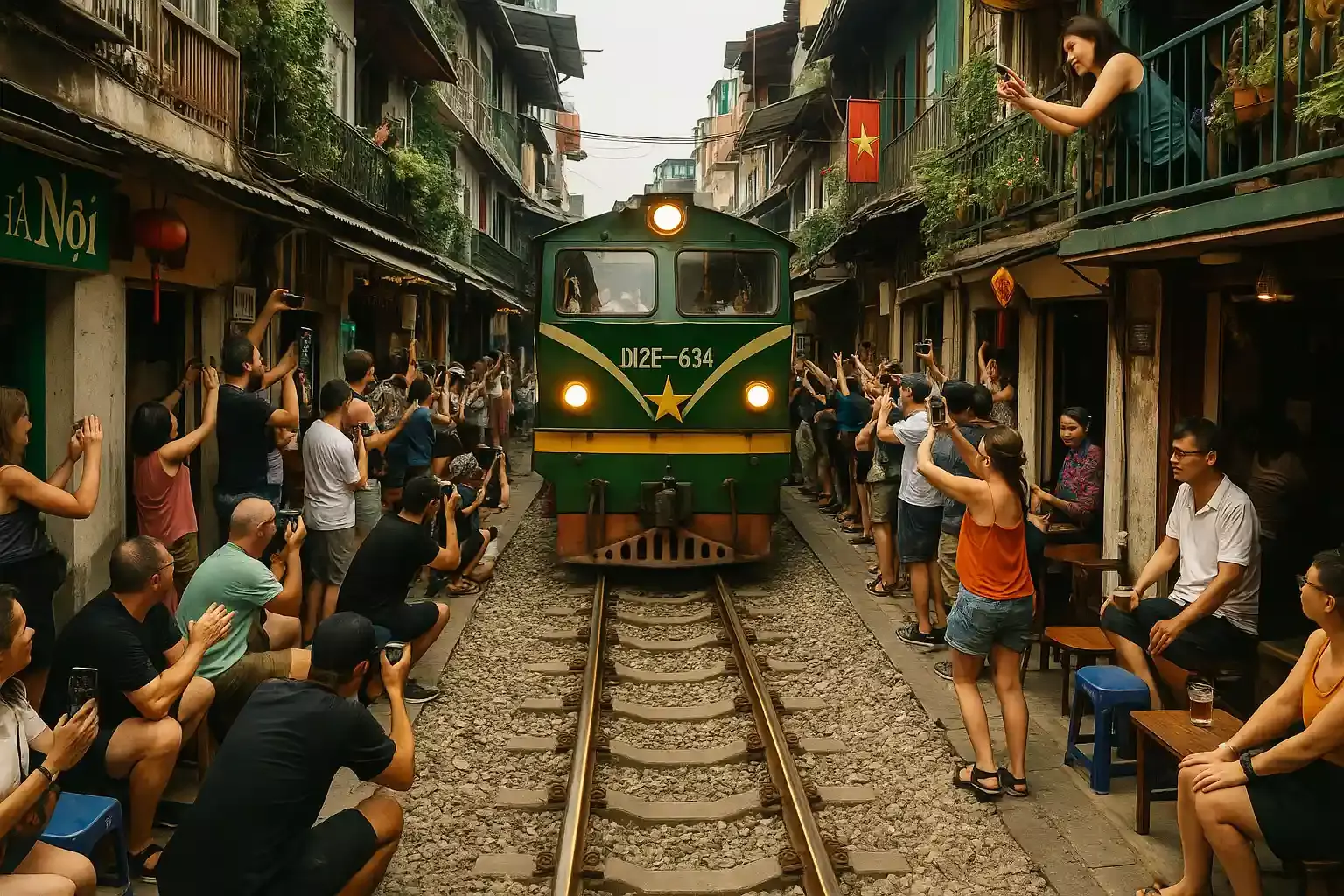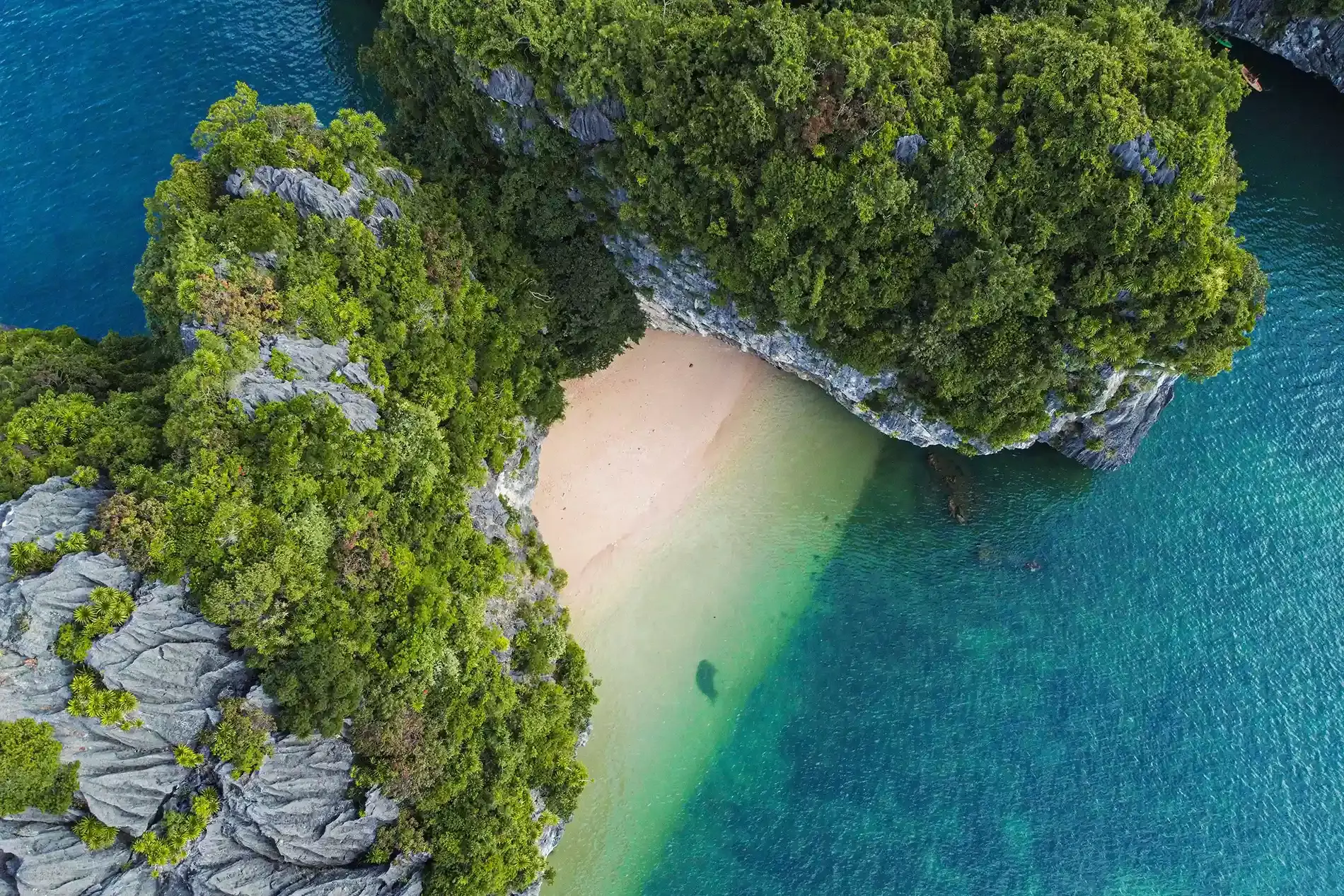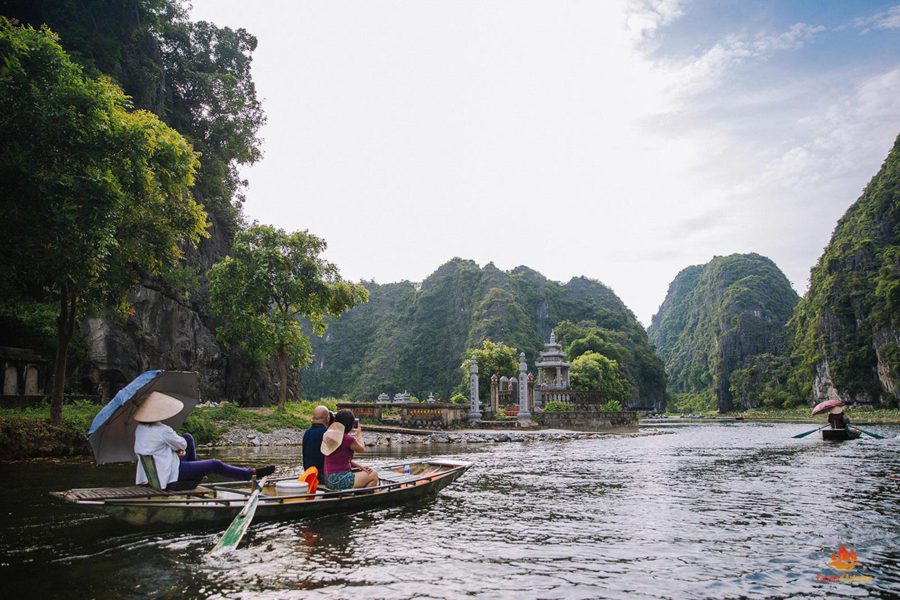
Best places to visit in North Vietnam
If you’re looking for a destination that combines breathtaking landscapes, vibrant culture, and unforgettable experiences, North Vietnam should be at the top of your list. This region offers everything from the iconic sights of bustling Hanoi and the emerald waters of Halong Bay to hidden villages nestled in lush valleys that few travelers ever see.
In this guide, we’ll take you through the best places to visit in North Vietnam—divided into two parts to make planning your trip easy and exciting. First, we’ll explore the must-see destinations that capture the essence of Vietnam, with famous spots like Hanoi, Halong, and Sapa. These are the places that will give you a taste of the country’s rich history and stunning natural beauty.
Then, we’ll dive into off-the-beaten-track destinations—perfect if you’re craving an adventure away from the crowds. Here, you’ll discover hidden gems like Mu Cang Chai and Ba Be, where remote villages and terraced rice fields offer an authentic glimpse into local life and the breathtaking scenery of Vietnam’s untouched landscapes.
Ready to explore North Vietnam? Let’s dive into the incredible destinations that await you.
Table des matières de l'article
The must-see destinations in North Vietnam
Northern Vietnam is home to some of the country’s most iconic and captivating destinations. From the vibrant streets of Hanoi to the mystical waters of Halong Bay, and the awe-inspiring mountains of Sapa and Ha Giang, these must-see spots offer a perfect blend of culture, adventure, and natural beauty. Whether you’re drawn to bustling cities or serene landscapes, these highlights promise an unforgettable experience and a true taste of Northern Vietnam’s charm.
Hanoi
Overview of the capital of Vietnam
Hanoi, the capital city of Vietnam, is a fascinating blend of ancient traditions and modern energy. With over a thousand years of history, this city weaves together its rich past and contemporary charm, offering visitors a captivating glimpse into Vietnamese life and culture. The bustling Old Quarter, serene lakes, and grand boulevards lined with French colonial architecture highlight Hanoi’s unique character. Here, ancient temples and historic sites coexist with trendy cafes, art galleries, and modern shops. Hanoi’s vibrant atmosphere, combined with its deeply rooted heritage, makes it the cultural heart of Vietnam—a place where traditional festivals, street performances, and a dynamic culinary scene bring the city’s spirit to life.
Trafic in Hanoi old quater, Vietnam. Photo: Mathieu Arnaudet
What to do in Hanoi ?
When it comes to exploring Hanoi, the city offers a range of must-see attractions and unique activities. Start your journey in the Old Quarter, where narrow streets are filled with market stalls, ancient temples, and local vendors selling everything from handicrafts to street food. A visit to the Ho Chi Minh Mausoleum is essential to understand Vietnam’s recent history; the mausoleum and surrounding complex honor the country’s iconic leader in beautifully maintained gardens and stately buildings. For a peaceful retreat, head to Hoan Kiem Lake, where you can visit Ngoc Son Temple on its small island and enjoy a stroll around the lake.
Train Street is an increasingly popular stop, where visitors gather in cozy cafes lined along the narrow tracks to witness a train pass just inches away—an exhilarating experience unique to Hanoi. Other highlights include the Temple of Literature, Vietnam’s first university, which dates back to 1070 and showcases traditional Vietnamese architecture. And of course, don’t leave without exploring Hanoi’s renowned food scene: take a food tour to sample local dishes like pho and bun cha, or catch a traditional water puppet show, a mesmerizing art form that originated in Northern Vietnam.
Halong bay
Overview of Halong bay
Halong Bay, a UNESCO World Heritage site, is one of Vietnam’s most breathtaking natural wonders. Known for its emerald waters and thousands of towering limestone islands topped with lush rainforests, Halong Bay offers a surreal and awe-inspiring landscape that captivates all who visit. The bay spans over 1,500 square kilometers and is dotted with nearly 2,000 islands and islets, each uniquely shaped by centuries of natural erosion. Often shrouded in mist, the karst formations rise majestically from the sea, creating a mystical atmosphere that feels straight out of a fantasy novel. With such beauty, it’s no wonder Halong Bay has become a must-visit destination for those traveling to Vietnam.
Beyond its stunning scenery, Halong Bay is also rich in cultural and geological history. Many of its islands are home to caves, grottos, and ancient fishing villages, offering visitors a glimpse into the bay’s unique ecosystem and traditional way of life. Whether you’re seeking adventure through kayaking and rock climbing or simply looking to unwind on a boat surrounded by spectacular views, Halong Bay provides an unforgettable experience that leaves a lasting impression.
Entrance of Sung Sot in Halong bay
What tour we suggest ?
To experience the best of Halong Bay, we highly recommend exploring the less-crowded Lan Ha Bay on one of our traditional vintage boats. Lan Ha Bay, located to the south of Halong, boasts similar beauty but with fewer tourists, allowing for a more peaceful and intimate journey. Our tours offer an exceptional way to enjoy this stunning region aboard classic wooden junks that capture the charm and elegance of traditional Vietnamese vessels.
Our Lan Ha Bay cruises are designed for both group and private experiences, making them perfect for all travelers. You’ll have the chance to navigate hidden lagoons, kayak through secluded inlets, and visit floating villages where you can observe the local lifestyle up close. Each tour includes gourmet meals on board, prepared with fresh local ingredients, and a well-curated itinerary that balances adventure and relaxation. Sailing on a vintage junk is a truly unique way to explore this remarkable bay, offering not only beautiful views but also an authentic connection to Vietnam’s maritime heritage.
Our articles about Cat Ba island :
- The best cruise from Cat Ba island
- Where to stay in Cat Ba island ? The best hotels
- What to do on Cat Ba island ? The top activities
Nos articles sur la baie de Lan Ha:
Sunset in Lan Ha, from our Four Seasons junk. Photo: Mathieu Arnaudet
Ninh Binh, “Halong bay on land”
Overview of Ninh Binh
Ninh Binh, often called the “Halong Bay on land,” is a stunning region in northern Vietnam known for its dramatic limestone karsts, lush rice paddies, and winding rivers. Located just two hours south of Hanoi, Ninh Binh offers a peaceful retreat from the city and immerses visitors in some of Vietnam’s most unique natural landscapes. The region’s beauty and tranquility, combined with its rich history and cultural sites, make it a perfect destination for nature lovers and history enthusiasts alike. The area is also recognized as a UNESCO World Heritage site, encompassing the Trang An Landscape Complex, which features towering cliffs, ancient caves, and historical temples nestled amid the serene countryside.
Beyond its scenic landscapes, Ninh Binh holds cultural significance with historical sites that date back to Vietnam’s earliest dynasties. It was once the capital of the country during the Dinh and Le dynasties, and the remains of ancient citadels and temples provide insight into Vietnam’s royal history. With its diverse offerings, Ninh Binh has become a popular destination for those seeking both adventure and a deeper understanding of Vietnamese culture.
Boat ride through the Tam Coc site, Ninh Binh, Vietnam Photo: Mathieu Arnaudet
What to do in Ninh Binh ?
When visiting Ninh Binh, there are a few must-do activities to make the most of your trip. Begin your journey with a boat tour of Trang An or Tam Coc, where you can glide through tranquil waterways surrounded by limestone cliffs and explore hidden caves. Local boatwomen paddle the boats with their feet, which is a unique sight in itself, and the journey takes you through tunnels and alongside lush landscapes that offer an immersive experience in the natural beauty of Ninh Binh.
Next, head to Mua Cave, where a climb of nearly 500 steps rewards you with a panoramic view over Tam Coc’s fields and karsts. Known as the “Great Wall of Ninh Binh,” this spot is perfect for capturing stunning photographs of the surrounding landscapes. Afterward, take some time to explore the Bai Dinh Pagoda, one of the largest temple complexes in Vietnam, known for its massive bronze Buddha statues and impressive architecture. Finally, don’t miss the chance to visit Hoa Lu Ancient Capital, where you can walk through the remnants of Vietnam’s former royal capital and learn about its historic significance. Together, these activities showcase the best of Ninh Binh’s nature, culture, and history.
Sapa
Overview of Sapa
Sapa, nestled in the Hoang Lien Son mountain range of northern Vietnam, is a picturesque town known for its stunning landscapes, terraced rice fields, and diverse ethnic communities. Often called the “Gateway to the Tonkinese Alps,” Sapa offers visitors an enchanting combination of mist-covered peaks, lush valleys, and traditional villages. This mountainous region is not only visually breathtaking but also culturally rich, with ethnic groups like the Hmong, Dao, and Tay preserving their unique customs, clothing, and ways of life. Sapa has become one of Vietnam’s top trekking destinations, where travelers can immerse themselves in the natural beauty of the landscapes and learn about the cultures of these indigenous communities.
While Sapa has grown in popularity and infrastructure over the years, it still retains much of its charm and traditional allure. The cooler climate makes it a refreshing escape from Vietnam’s heat, and each season offers its own unique beauty. Whether you’re visiting for the terraced fields during harvest season, the blooming flowers in spring, or the occasional snowfall in winter, Sapa is a destination that captivates travelers year-round.
Villagers around Sapa harvesting rice using traditional, non-mechanized methods. Photo : Mathieu Arnaudet
What to do in Sapa ?
To make the most of your Sapa experience, start by trekking through the stunning Muong Hoa Valley, where you’ll be surrounded by cascading rice terraces and scenic mountain views. Guided treks allow you to explore remote villages like Lao Chai and Ta Van, where you can interact with local ethnic communities and get a glimpse into their daily lives. For a panoramic view of the entire region, consider taking the cable car to Fansipan, the highest peak in Indochina, known as the “Roof of Vietnam.” The views from Fansipan are unparalleled, giving you a breathtaking vantage point over Sapa’s mountain landscape.
Another must-do is visiting a local market, such as the Bac Ha or Sapa Market, where villagers from surrounding areas come to sell handmade textiles, crafts, and produce. This is a great opportunity to support local artisans and bring back unique souvenirs, all while experiencing the vibrant, colorful atmosphere of the market.
What to avoid in Sapa ?
While Sapa offers incredible experiences, there are a few things to avoid to ensure a more authentic and responsible visit. First, avoid taking part in tours that don’t respect the local communities, as some can be exploitative or encourage unregulated trekking, which can harm the environment. Be cautious of trekking companies that don’t engage local guides or communities fairly.
Additionally, try to avoid weekends and peak holiday seasons, as the town can become overly crowded, and popular trekking routes may be busier than usual. If possible, visit during the week to enjoy a quieter experience. Lastly, beware of persistent street vendors, especially around the town center. While many are friendly and respectful, some may push you to buy souvenirs. Politely decline if you’re not interested, and consider supporting local artisans at markets or community shops instead.
Ha Giang
Overview of Ha Giang
Ha Giang, a mountainous province in northern Vietnam, has recently gained popularity as a must-visit destination for adventure seekers and those looking to experience Vietnam’s rugged natural beauty. Known for its dramatic landscapes, towering limestone peaks, and winding mountain roads, Ha Giang offers a remote and authentic escape into Vietnam’s highlands. Unlike more developed tourist areas, Ha Giang remains relatively untouched, allowing visitors to connect with the unique culture of the ethnic minority communities who live here, such as the Hmong, Tay, and Dao people.
The Ha Giang Loop —a scenic route that twists through breathtaking mountain passes, lush valleys, and terraced rice fields—has become an iconic journey for travelers. The Loop provides a stunning showcase of Ha Giang’s beauty, and over the past few years, it has attracted more and more visitors looking for an off-the-beaten-path adventure. With its increasing popularity, Ha Giang now offers more accommodations and organized tours, but it still retains its wild and untamed charm, making it a thrilling choice for anyone willing to take on the winding roads.
The spectacular Ha Giang Loop
What to do on the Ha Giang loop ?
The Ha Giang Loop is best explored over three to four days, either by renting a motorbike or joining a tour with an experienced driver. Along the Loop, there are several highlights you won’t want to miss. Start your journey in Dong Van, a small town set in a valley surrounded by mountains. This town is known for its traditional stone houses and the Dong Van Market, where ethnic minorities gather every weekend to trade goods and showcase their traditional clothing. A stop here offers a rich cultural experience and a chance to taste local delicacies.
From Dong Van, continue to the Ma Pi Leng Pass, one of Vietnam’s most breathtaking mountain passes. Known as the “King of Passes,” Ma Pi Leng offers jaw-dropping views over the Nho Que River and the towering limestone cliffs. Here, you can take a short hike or enjoy a boat ride along the river for an unforgettable perspective on the landscape. Another essential stop is the Hmong King’s Palace in Sa Phin, an impressive mansion that offers a glimpse into the history and architecture of the Hmong people.
As you move along the Loop, be sure to spend time in Meo Vac, another vibrant town surrounded by stunning scenery. Meo Vac is a great base for hiking and exploring nearby villages, as well as for experiencing the Meo Vac Market, where you can observe and interact with locals. If you’re up for more adventure, consider taking a boat ride on the Nho Que River, where you’ll be surrounded by towering cliffs and serene waters that offer a different view of Ha Giang’s natural beauty.
The Ha Giang Loop provides a journey filled with epic views, cultural encounters, and thrilling roads, making it one of Vietnam’s most unforgettable travel experiences. Whether you ride solo or join a tour, the Loop’s rugged charm and stunning scenery will make every twist and turn a moment to remember.
Ma Pi Leng, Ha Giang, Vietnam. Photo : Mathieu Arnaudet
The off-beaten-tracks destination in North Vietnam
For those looking to venture beyond the popular spots, Northern Vietnam offers hidden gems that showcase its natural beauty and cultural depth away from the crowds. These lesser-known destinations, like Pu Luong, Mu Cang Chai, Hoang Su Phi, Ba Be, and Cao Bang, reveal landscapes of terraced rice fields, remote villages, and pristine lakes. Each of these places offers a unique experience, immersing travelers in authentic rural life and some of the country’s most breathtaking scenery.
Pu Luong
Overview of Pu Luong
Pu Luong, located about 160 kilometers southwest of Hanoi, is a hidden gem in Northern Vietnam that offers a tranquil escape from the city’s hustle and bustle. Known for its lush terraced rice fields, misty mountains, and traditional ethnic villages, Pu Luong Nature Reserve provides an ideal retreat for nature lovers and cultural enthusiasts alike. Often overshadowed by more famous destinations like Sapa, Pu Luong remains refreshingly untouched and less crowded, allowing visitors to immerse themselves in a peaceful, authentic rural landscape.
Visiting Pu Luong is all about slowing down and appreciating Vietnam’s natural beauty and cultural richness. This area is home to the Thai and Muong ethnic groups, whose stilted wooden houses and traditional farming practices add to the charm of the reserve. The landscapes, especially during the rice harvest season, are stunning, with bright green or golden terraced fields that stretch across valleys and mountainsides. If you’re looking for an off-the-beaten-path experience close to Hanoi, Pu Luong is a perfect choice.
The water wheels of Pu Luong. Photo : Mathieu Arnaudet
What to do in Pu Luong ?
In Pu Luong, there are plenty of activities to make your trip memorable. Start by exploring the Pu Luong Nature Reserve, where trekking trails take you through lush jungles, rice terraces, and small villages. These treks offer not only incredible views but also a chance to meet local villagers and learn about their daily lives. A popular route is the hike from Kho Muong Village to Kho Muong Cave, a fascinating limestone cave with impressive rock formations.
For a unique experience, visit the Bamboo Water Wheels in Don Village, where you can see these traditional, hand-made water wheels in action, channeling water from rivers into the rice fields. This is also a great spot to try rafting on the Cham River, a serene activity that lets you float through beautiful landscapes and watch local farmers at work.
If you visit during harvest season, take time to wander the rice terraces at dawn or dusk, when the light casts a magical glow over the fields. Staying in a local homestay or eco-lodge is highly recommended, as it allows you to enjoy the peaceful countryside atmosphere and experience traditional hospitality. Overall, Pu Luong offers a perfect mix of adventure and relaxation, making it an ideal destination for those seeking a quiet escape into nature.
More information about >> What to do in Pu Luong ? The ultimate guide.
Mu Cang Chai
Overview of Mu Cang Chai
Nestled deep in the mountains of Yen Bai Province, Mu Cang Chai is a remote region renowned for its breathtaking terraced rice fields. Located about 300 kilometers northwest of Hanoi, Mu Cang Chai offers visitors a chance to witness some of the most stunning agricultural landscapes in Vietnam. Recognized as a national heritage site, the terraced fields here have been meticulously carved into the mountainsides by generations of the Hmong people, creating a masterpiece of human and natural harmony. Visiting Mu Cang Chai is like stepping into a painting, with golden fields cascading down hillsides and mist swirling around the peaks.
Mu Cang Chai is especially popular among photographers and nature enthusiasts, particularly during the rice harvest season from September to October, when the fields glow with vibrant shades of yellow and gold. Unlike the more accessible rice terraces of Sapa, Mu Cang Chai remains relatively untouched, making it an ideal destination for travelers looking to experience authentic rural life and connect with the local culture.
Rice terraces of Mu Cang Chai nearing harvest time. Photo : Mathieu Arnaudet
What to do in Mu Cang Chai ?
The main attraction in Mu Cang Chai is, of course, the terraced rice fields, which offer spectacular views and endless photo opportunities. Start by visiting La Pan Tan, one of the most famous spots for terraced fields, where the layers of golden rice stretch as far as the eye can see. You can hike along the trails that wind through the fields, enjoying panoramic views of the mountains and valleys. Another stunning area is Che Cu Nha, known for its steep terraces that appear to cascade down the hillsides like waves.
If you’re interested in local culture, a visit to a Hmong village is a must. The Hmong people, who have lived in this region for centuries, still practice traditional farming methods and wear distinctive, colorful clothing. You can join a homestay to experience their daily routines, try your hand at farming, or simply enjoy a home-cooked meal with local ingredients. Staying in a homestay is also a fantastic way to learn more about the customs and traditions of this unique community.
For a more adventurous experience, consider taking a motorbike tour along the winding mountain roads around Mu Cang Chai. These scenic routes offer breathtaking views and allow you to explore the area at your own pace. If you’re visiting during harvest season, try to catch a traditional Hmong festival, where you can see locals celebrating with dance, music, and food. With its dramatic landscapes and rich cultural heritage, Mu Cang Chai is a perfect destination for those seeking an immersive and unforgettable journey into Vietnam’s highlands.
For more information >> Mu Cang Chai: your ultimate guide to the stunning terraced rice fields
Ba Be National Park
Overview of Ba Be National Park
Ba Be National Park, located in Bac Kan Province in northern Vietnam, is a natural paradise that offers a stunning blend of lakes, rivers, mountains, and dense forests. Named after Ba Be Lake, Vietnam’s largest natural lake, this national park is a haven for biodiversity and home to over 1,000 species of plants and animals. Ba Be’s serene landscapes and tranquil atmosphere make it a perfect destination for those looking to escape the hustle and bustle of city life and immerse themselves in nature. Unlike more tourist-heavy spots, Ba Be retains its wild and untouched beauty, offering visitors a peaceful retreat surrounded by lush greenery and shimmering waters.
This remote national park is not only celebrated for its natural beauty but also for its cultural richness. Ba Be is home to several ethnic groups, including the Tay, Dao, and Hmong people, who live in stilt houses along the lake and riverbanks. Visiting Ba Be allows you to explore Vietnam’s incredible natural diversity and gain insight into the lives of these local communities, who continue to uphold their traditions and sustainable way of life.
Hiking in Ba Be National Park. Photo : Mathieu Arnaudet
What to do in Ba Be National Park ?
The centerpiece of Ba Be National Park is Ba Be Lake, where you can take a boat trip to fully appreciate the park’s majestic scenery. Cruising on the emerald-green waters of the lake, you’ll pass towering limestone cliffs, small islands, and peaceful coves, all while enjoying the surrounding forests. The boat trip typically includes stops at notable sites like An Ma Temple, an ancient shrine set on a small island in the lake, and Puong Cave, a large limestone cavern carved by the Nang River, home to thousands of bats.
Another highlight of Ba Be is the Dau Dang Waterfall, a scenic cascade located along the river connecting Ba Be Lake with neighboring areas. You can reach the waterfall by boat or a short trek, making it a perfect spot for a picnic and a photo session. For a more immersive experience, consider exploring the park’s trekking trails. There are trails suitable for all levels, from gentle hikes through the forest to more challenging routes that lead to spectacular viewpoints overlooking the lake and surrounding valleys.
If you’re interested in local culture, a homestay in a Tay village, such as Pac Ngoi, is a must. Staying in a traditional stilt house gives you a firsthand look at the Tay people’s way of life, from their daily farming routines to their delicious home-cooked meals. You can also participate in local activities, such as fishing, foraging, or even learning how to cook traditional dishes. The hospitality of the Tay people and the immersive nature of a homestay make for a truly enriching experience.
With its unique blend of natural beauty and cultural heritage, Ba Be National Park offers a serene escape and a deep connection with Vietnam’s diverse landscape and people.
Discover of 3 days Ba Be National Park discovery
Hoang Su Phi
Overview of Hoang Su Phi
Hoang Su Phi, located in the remote Ha Giang Province, is a hidden gem in Northern Vietnam, known for its awe-inspiring terraced rice fields and traditional rural lifestyle. This off-the-beaten-path destination has recently gained popularity among adventurous travelers seeking authentic experiences and unspoiled landscapes. The terraced rice fields here are a national heritage site, particularly stunning during the harvest season when the hills are draped in vibrant gold. Beyond the scenic beauty, Hoang Su Phi is home to various ethnic communities, including the Dao, Nung, and Tay people, each preserving their own rich culture and customs. A journey to Hoang Su Phi offers travelers a unique insight into both the natural wonders and cultural depth of Vietnam’s highlands.
For those looking to explore this remote area, Parfum d’Automne offers a 6-day trekking tour, which provides a comprehensive experience of the region’s beauty. The tour can be organized with an English-speaking guide from Hanoi or a local guide from Hoang Su Phi. While local guides may have limited English, they’re incredibly knowledgeable about the area and ensure a smooth, engaging trek through the countryside.
Spectacular rice terraces of Hoang Su Phi. Photo : Mathieu Arnaudet
What to do in Hoang Su Phi ?
The highlight of any visit to Hoang Su Phi is trekking through the terraced rice fields that blanket the hillsides. These rice fields, sculpted by hand over generations, are a testament to the hard work and ingenuity of the local communities. Guided treks will take you along winding paths that offer panoramic views of the terraces, allowing you to experience their beauty up close. The routes vary in difficulty, so whether you’re looking for a gentle walk or a challenging climb, there are options to suit all fitness levels.
Beyond the scenic landscapes, trekking in Hoang Su Phi provides a rare opportunity to visit remote villages and meet local ethnic families who warmly welcome guests into their communities. Your local guide will share stories about the traditions, farming practices, and daily life of the people who have lived here for generations. Along the way, you’ll stop to enjoy meals prepared by the local guide, featuring traditional Vietnamese dishes that highlight the flavors of the region.
In addition to trekking, be sure to visit local markets if your trip aligns with one, as they provide an authentic glimpse into local culture. Markets such as the one in Xin Man are vibrant gatherings where villagers from surrounding areas come to trade produce, handicrafts, and textiles. Here, you can see traditional clothing, sample local snacks, and perhaps bring home a unique souvenir.
Hoang Su Phi is a remarkable destination that combines natural beauty with a deep sense of cultural heritage, making it a perfect choice for travelers looking to experience Vietnam’s highlands in a meaningful and adventurous way.
For more information >> Trekking in Hoang Su Phi – the ultimate guide
Cao Bang
Overview of Cao Bang
Cao Bang, located near Vietnam’s northern border with China, is a spectacularly scenic province characterized by lush valleys, striking limestone karsts, and emerald-green rivers. Often overlooked by tourists, Cao Bang offers a serene escape into nature, where visitors can discover some of Vietnam’s most pristine landscapes and cultural richness. The region is home to ethnic communities, including the Tay, Nung, and Hmong, each preserving unique customs and traditions that add to the charm of this remote area. Cao Bang’s natural beauty is exemplified by Ban Gioc Waterfall, one of Southeast Asia’s largest and most breathtaking waterfalls, making it a must-visit for those drawn to unspoiled scenery and tranquil surroundings.
Spectacular landscapes of Cao Bang, Vietnam.. Photo : Mathieu Arnaudet
What to do in Cao Bang ?
In Cao Bang, begin with a visit to Ban Gioc Waterfall, one of Vietnam’s most stunning natural wonders, where you can take a bamboo raft close to the falls. Nearby, explore Nguom Ngao Cave, known for its impressive limestone formations. For nature enthusiasts, trekking in Phja Oac – Phja Den National Park offers a chance to experience lush landscapes and local wildlife. History buffs can visit the Pac Bo Historical Site, where Ho Chi Minh once lived and worked, while cultural explorers will enjoy meeting locals in traditional villages like Phuc Sen, famed for blacksmithing. Cao Bang is an ideal destination for nature, history, and cultural immersion.
For more information >> Cao Bang – the ultimate travel guide
Ban Gioc waterfall in Cao Bang.
In this guide, we’ve highlighted five must-see destinations that are perfect if you have a limited timeframe—around a week—to explore North Vietnam. These spots showcase the region’s iconic landscapes, culture, and history. For those with a bit more time (10 to 15 days), we’ve also recommended five off-the-beaten-track destinations for a more immersive journey. These hidden gems offer deeper connections with nature and local communities, making your North Vietnam adventure unforgettable, no matter how long you stay.
